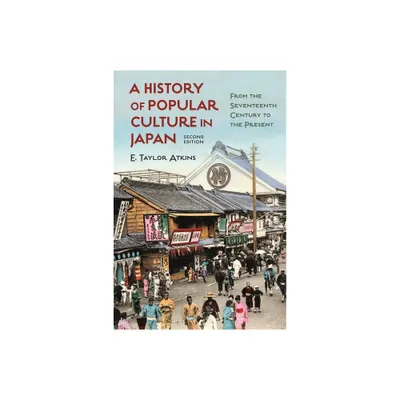Home
Contents Tourism in Japan: Pilgrimages to "Sacred Sites" of Popular Culture
Loading Inventory...
Barnes and Noble
Contents Tourism in Japan: Pilgrimages to "Sacred Sites" of Popular Culture
Current price: $119.99


Barnes and Noble
Contents Tourism in Japan: Pilgrimages to "Sacred Sites" of Popular Culture
Current price: $119.99
Loading Inventory...
Size: OS
*Product Information may vary - to confirm product availability, pricing, and additional information please contact Barnes and Noble
*Includes 100 color images.
Japanese manga, anime, music, cinema, television dramas, and computer games have gained many international fans. Recognizing the global appeal of Japanese popular culture, since the early 2000s the Japanese government has promoted popular culture exports and developed a national branding strategy using the slogan “Cool Japan.” In 2004, the large numbers of Japanese people who visited South Korea after watching the Korean television drama
Winter Sonata
caught the Japanese government’s attention. In 2005, the Japanese government officially recognized that Japanese popular culture had another potential: to increase international visitor numbers to Japan and energize the domestic tourism industry.
The term used in Japan to describe this form of tourism induced by popular culture is
kontentsu tsurizumu
, “contents tourism”—defined as travel behavior motivated fully or partially by narratives, characters, locations, and other creative elements of popular culture forms, including film, television dramas, manga, anime, novels, and computer games.
This book presents a comprehensive theoretical and historical overview of the phenomenon of contents tourism in Japan. Government, mass media, and scholarly interest in contents tourism is relatively new, and in its modern guise contents tourism behavior is closely associated with digital technology, the Internet, and social media.
The rich history of derivative works, parodies, and multiuse of the same contents in a media mix enriched by the highly popular formats of anime and manga led Japanese scholars to seek a different approach to analyzing the links between popular culture and tourism.
Scholars and those working in creative industries settled on the concept of “contents,” and focused on asking how and why particular creative elements resonated with fans and how fans’ interests in a “narrative world”—whether fantasy, fictional, or even largely non-fictional—could inspire travel to actual places, which came to be referred to as “sacred sites” by fans.
This book presents a vast range of works, artists and contents that have generated “sacred sites” across the length and breadth of Japan. Some sets of contents trigger tourism over only a short time period, while others have been inducing tourism for decades or even centuries.
Contents Tourism in Japan
is a groundbreaking book in an important and rapidly emerging area of scholarly, media, political and business interest. It will be of interest primarily to scholars and practitioners with a specialization in tourism and media, but also to those studying contemporary popular culture in Japan and East Asia.
Japanese manga, anime, music, cinema, television dramas, and computer games have gained many international fans. Recognizing the global appeal of Japanese popular culture, since the early 2000s the Japanese government has promoted popular culture exports and developed a national branding strategy using the slogan “Cool Japan.” In 2004, the large numbers of Japanese people who visited South Korea after watching the Korean television drama
Winter Sonata
caught the Japanese government’s attention. In 2005, the Japanese government officially recognized that Japanese popular culture had another potential: to increase international visitor numbers to Japan and energize the domestic tourism industry.
The term used in Japan to describe this form of tourism induced by popular culture is
kontentsu tsurizumu
, “contents tourism”—defined as travel behavior motivated fully or partially by narratives, characters, locations, and other creative elements of popular culture forms, including film, television dramas, manga, anime, novels, and computer games.
This book presents a comprehensive theoretical and historical overview of the phenomenon of contents tourism in Japan. Government, mass media, and scholarly interest in contents tourism is relatively new, and in its modern guise contents tourism behavior is closely associated with digital technology, the Internet, and social media.
The rich history of derivative works, parodies, and multiuse of the same contents in a media mix enriched by the highly popular formats of anime and manga led Japanese scholars to seek a different approach to analyzing the links between popular culture and tourism.
Scholars and those working in creative industries settled on the concept of “contents,” and focused on asking how and why particular creative elements resonated with fans and how fans’ interests in a “narrative world”—whether fantasy, fictional, or even largely non-fictional—could inspire travel to actual places, which came to be referred to as “sacred sites” by fans.
This book presents a vast range of works, artists and contents that have generated “sacred sites” across the length and breadth of Japan. Some sets of contents trigger tourism over only a short time period, while others have been inducing tourism for decades or even centuries.
Contents Tourism in Japan
is a groundbreaking book in an important and rapidly emerging area of scholarly, media, political and business interest. It will be of interest primarily to scholars and practitioners with a specialization in tourism and media, but also to those studying contemporary popular culture in Japan and East Asia.


















